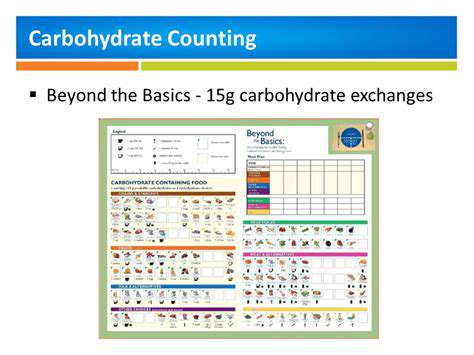Recognizing Signs of Obsessive Compulsive Disorder: Key Symptoms
Understanding the Nature of Obsessive Thoughts
When grappling with obsessive thoughts—those relentless mental intruders that define Obsessive-Compulsive Disorder—we're confronting more than just passing worries. These mental invaders crash through our mental barriers like unwelcome guests, bringing along their luggage of distress. What makes them particularly insidious is their ability to bypass our mental filters, planting seeds of doubt about everything from germs to forgotten stove burners. The psychological community recognizes these patterns as neurological misfires rather than personal failings.
The critical insight here? These thoughts are like spam emails from your brain—annoying, persistent, but ultimately meaningless. They reveal nothing about your true character or desires. Learning to observe them with detached curiosity, rather than engaging with them as truths, marks the first step toward regaining mental equilibrium.
Identifying Recurring Themes
OCD doesn't attack randomly—it zeroes in on what matters most to you. For the hygiene-conscious, it's contamination fears. For the responsible, it's doubts about completed tasks. The disorder essentially hijacks your values, turning them against you. Recognizing these personalized attack patterns helps strip them of their power.
When patients start tracking their thought patterns, they often discover surprising consistencies. The content may vary, but the underlying structure—the what if scenarios, the catastrophic predictions—follows predictable templates. This recognition creates psychological distance, allowing sufferers to respond rather than react.
Distinguishing Obsessions from Normal Worry
Everyone worries about leaving the oven on occasionally. But when you circle the block for the third time to check, or when mental images of burning houses disrupt your workday, you've crossed into OCD territory. Normal concerns respond to logic and evidence; obsessions persist despite them.
The key differentiator lies in the thought's stickiness—how desperately it clings to consciousness despite your efforts to dislodge it. Like a song you can't stop humming, the harder you try to suppress it, the louder it plays. This is why traditional reassurance-seeking backfires with OCD, creating a cruel paradox where solutions become part of the problem.
The Role of Compulsions in OCD
Compulsions are the brain's faulty attempt at problem-solving—like hitting a broken vending machine in hopes it will work. The temporary anxiety relief they provide creates a powerful reinforcement loop. Each compulsive act essentially tells the brain, That thought was worth taking seriously, ensuring its return.
Modern treatment approaches focus on breaking this cycle through exposure techniques. By resisting compulsions while allowing anxiety to naturally subside, patients recalibrate their threat detection systems. It's challenging work—like resisting scratching a poison ivy rash—but ultimately rewires the brain's response patterns.
Seeking Professional Help and Support
Effective OCD treatment requires specialized approaches. General talk therapy often proves ineffective, while Exposure and Response Prevention (ERP) therapy demonstrates remarkable success rates. Finding a clinician well-versed in these evidence-based methods makes all the difference.
Support groups provide something medications can't—the profound relief of realizing you're not alone in these struggles. Hearing others describe thoughts you were too ashamed to voice can be powerfully liberating. As one long-term survivor told me, OCD loses half its power when you say it out loud to someone who understands.
Recognizing Compulsive Behaviors: The Repetitive Actions
Understanding Repetitive Actions
Compulsions often masquerade as reasonable precautions—until they start dictating your daily schedule. Where normal habits streamline life, compulsions hijack it. The defining feature? They're done to prevent or reduce distress rather than because they're inherently enjoyable or practical.
Consider handwashing: sensible after using the bathroom, problematic when your skin cracks from hourly scrubbing. The line between caution and compulsion appears when the behavior persists despite obvious negative consequences—missed appointments, damaged relationships, physical harm.
Identifying the Triggers and Patterns
Compulsions rarely strike randomly. They cluster around specific triggers—emotional states, environments, or times of day. Many patients report heightened symptoms during stress or transitions. Keeping a behavior log often reveals surprising patterns, like increased checking rituals when facing important decisions.
The most effective interventions target these trigger points. Cognitive strategies help reinterpret trigger meanings (This anxiety means I care about doing well, not I must act to prevent disaster). Behavioral experiments test whether feared outcomes actually occur when resisting compulsions—spoiler: they usually don't.
The Impact on Daily Life
Time theft represents OCD's most tangible cost. What begins as five minutes of reassurance-seeking can mushroom into hours of ritualizing. Relationships suffer as loved ones grow frustrated or become unwillingly enmeshed in reassurance rituals.
The cruel irony? Compulsions designed to prevent harm often create the very consequences patients fear—lost jobs due to chronic lateness from checking rituals, skin infections from overwashing, social isolation from avoidance behaviors. Recognizing this self-defeating pattern motivates many to seek change.
Seeking Professional Help
Specialized OCD treatment differs markedly from general anxiety approaches. Effective therapists focus on behavioral experiments rather than insight-building. Medication can help lower the anxiety threshold, making exposure work more manageable, but rarely cures OCD alone.
The gold standard remains ERP therapy—gradually facing fears while resisting compulsions, like rebuilding tolerance to an allergen. Success isn't about eliminating anxiety, but about developing confidence in one's ability to tolerate it. With proper guidance, even long-standing rituals can loosen their grip.
The Impact on Daily Life: Recognizing the Severity

Recognizing the Subtle Shifts
OCD's progression often follows a stealthy pattern—like a thermostat gradually turning up the heat. What begins as reasonable precautions slowly morph into non-negotiable demands. The hallmark isn't the presence of rituals, but their expanding territory in one's mental landscape.
Friends might notice first—the way conversations circle certain topics, or how plans frequently change to accommodate rituals. Work performance may suffer as mental real estate gets overtaken by obsessive problem-solving. The disorder's true cost becomes clear in life's narrowing possibilities.
Adapting to Technological Advancements
Modern technology presents new challenges and opportunities for OCD sufferers. While apps can facilitate compulsive checking, they also enable innovative treatments like teletherapy and digital exposure tools. Online communities provide support, though require discernment to avoid reassurance-seeking traps.
The digital age demands new coping strategies—like setting strict boundaries on device-checking rituals, or using website blockers during vulnerable times. Technology itself is neutral; its impact depends on how we harness it in recovery.
Shifting Economic Landscapes
OCD's economic toll extends beyond therapy costs. Career trajectories often flatten as sufferers avoid promotions that might increase stress. Some become underemployed, choosing jobs below their capacity to minimize triggers. The cumulative lifetime earnings loss can reach six figures.
Financial compulsions—like excessive bill-checking or pathological frugality—can strain households. Conversely, some overspend on protective items like cleaning supplies or organizational systems. Financial counseling should accompany mental health treatment in these cases.
The Evolution of Social Norms
Cultural shifts around mental health have paradoxically helped and hindered OCD sufferers. While reduced stigma encourages help-seeking, popular misuse of terms like OCD to describe neatness trivializes the disorder's torment.
The most damaging misconception? That compulsions reflect personal values rather than neurological misfires. Educating loved ones about OCD's biological basis helps them offer support without enabling rituals. Family involvement often proves crucial in sustained recovery.
Navigating Global Interconnectedness
Today's 24/7 news cycle presents particular challenges for those with contamination or harm obsessions. Pandemic coverage triggered relapses for many in recovery. Conversely, global connections facilitate access to specialized care and research participation regardless of geography.
The treatment community now recognizes the need to address meta obsessions—fears about having OCD itself. Global awareness campaigns help normalize that recovery isn't linear, and relapse doesn't equal failure.
The Impact of Environmental Concerns
Eco-anxiety presents special challenges for OCD sufferers, as legitimate environmental concerns can morph into paralyzing obsessions. Recycling rituals might expand to hours of sorting, or fears about water waste prevent basic hygiene.
Effective treatment helps channel environmental values into sustainable—not self-destructive—actions. The goal isn't to stop caring, but to care in ways that nourish rather than deplete. This nuanced approach preserves values while restoring functionality.

Seeking Professional Help: The Importance of Diagnosis and Treatment

Seeking Professional Guidance for Mental Health
The decision to seek help often comes after years of self-management attempts. Many describe a tipping point—perhaps a missed milestone or strained relationship—that finally overcomes the shame barrier. What few anticipate is the relief that follows sharing their secret burden with a knowledgeable professional.
Specialized OCD therapists approach symptoms with neither alarm nor dismissal. Their matter-of-fact attitude helps normalize the experience, reducing the secondary shame that often compounds the disorder. This therapeutic stance alone can be profoundly healing.
Identifying and Addressing Underlying Issues
While OCD has biological roots, stress and trauma can exacerbate symptoms. A skilled clinician helps distinguish between core OCD and comorbid conditions requiring different approaches. This diagnostic clarity informs treatment sequencing—for instance, addressing trauma before intensive ERP in some cases.
The therapeutic relationship itself becomes a laboratory for testing fears—that thoughts are dangerous, that anxiety is intolerable, that uncertainty is unmanageable. Each session provides evidence against these catastrophic predictions.
Developing Coping Mechanisms and Strategies
Effective coping strategies focus on changing responses to thoughts rather than eliminating thoughts themselves. Mindfulness techniques help create observation distance. Cognitive restructuring challenges exaggerated risk assessments. Behavioral experiments test the actual consequences of resisting compulsions.
Patients often discover that their greatest fear—being overwhelmed by anxiety—proves more manageable than anticipated. This hard-won confidence generalizes to other life challenges, becoming an unexpected recovery dividend.
Understanding and Managing Emotional Responses
ERP therapy essentially retrains the emotional brain. Through repeated exposure to triggers without ritualizing, patients learn that anxiety naturally subsides over time—like a wave that crests and breaks. This process, called habituation, rewires neural pathways over time.
The goal isn't to eliminate discomfort, but to develop trust in one's capacity to endure it. This emotional resilience transfers to life beyond OCD, enriching relationships and risk-taking capacity.
Building Resilience and Self-Esteem
Recovery often reveals unexpected strengths—the creativity that devised complex rituals, the diligence that maintained them. Reframing these as assets rather than pathologies fosters self-compassion. Many discover leadership abilities as they share hard-won wisdom with newer recovery peers.
Exploring Different Treatment Options
Beyond ERP, promising innovations like Inference-Based CBT target the reasoning styles underlying OCD. Some benefit from adjunct therapies like ACT (Acceptance and Commitment Therapy) for values clarification. The treatment landscape now offers options beyond the one-size-fits-all approach of past decades.
Neuromodulation techniques like TMS show promise for medication-resistant cases. Research continues into personalized approaches based on symptom subtypes and neuroimaging findings. The future points toward increasingly tailored interventions.
Finding Support and Resources in the Community
Peer support fills gaps that professional treatment can't—the midnight anxiety spike, the temptation to ritualize during stress. Online forums now offer moderated spaces to share struggles without seeking reassurance. Local support groups provide accountability and normalization.
Many find helping others strengthens their own recovery. As one support group regular noted, Explaining ERP principles to newcomers reminds me to use them myself. This reciprocal healing underscores that recovery, while personal, needn't be solitary.